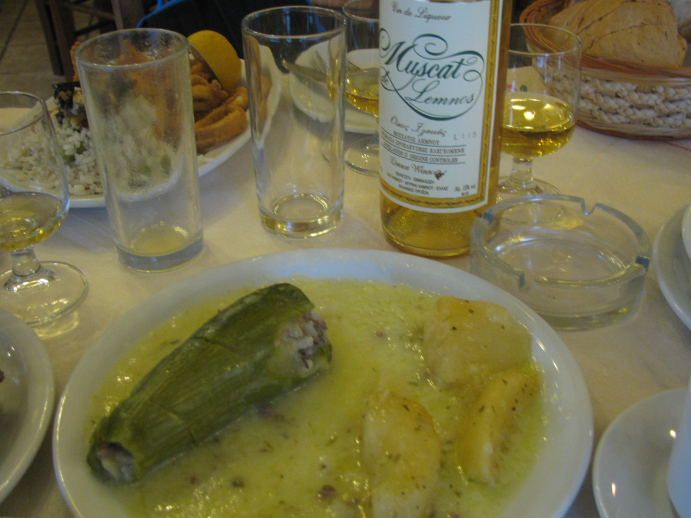Growing up I have always been intrigued by the lives of hermits/monks/nuns who live in monastaries. Meteora and Mount Athos are the two most famous surviving Greek Orthodox monastic communities. The former allows both male and female visitors, the latter allows only male workers (on the island) and monks; female is strictly prohibited on the island.
 Located northwest of Athens and about a 4.5 hours train ride away, the Meteora monasteries are among the most striking views in Greece. The name Meteora (Μετεωρα) is Greek for "suspended in the air," which perfectly describes these six remaining and yet remarkable Greek Orthodox monasteries that are spetacularly perched atop rocky pinancles in Thesaly.
Located northwest of Athens and about a 4.5 hours train ride away, the Meteora monasteries are among the most striking views in Greece. The name Meteora (Μετεωρα) is Greek for "suspended in the air," which perfectly describes these six remaining and yet remarkable Greek Orthodox monasteries that are spetacularly perched atop rocky pinancles in Thesaly.
 The sight is simply magical and surreal, a perfect illustration of the convergence of the marvels of nature and human effort.
The sight is simply magical and surreal, a perfect illustration of the convergence of the marvels of nature and human effort.
 None of the pictures we took can do its justice. It is one of those places meant to be visited in person as the photos can't convey its spirituality and mythical aspects of these monastaries and unique formation of rocks combined.
None of the pictures we took can do its justice. It is one of those places meant to be visited in person as the photos can't convey its spirituality and mythical aspects of these monastaries and unique formation of rocks combined.
 Meteora was originally settled by hermits/monks who travelled west from the monastic communites of the Athos penisula as it was increasingly besieged by the Turkish pirates during the 11th century. They started off living in caves and fissures between these rocks. As the times became more unsure during an age of Ottoman empire, they climbed higher up the rock face until they were living on the inaccessible peaks. They then used ropes/retractable wooden ladders/nets/baskets to bring material/people up. This was how these monastaries were built and reached. But now there are paved roads, pathways (hiking trails from town) and steps carved onto the rocks to get you to these monastaries.
Meteora was originally settled by hermits/monks who travelled west from the monastic communites of the Athos penisula as it was increasingly besieged by the Turkish pirates during the 11th century. They started off living in caves and fissures between these rocks. As the times became more unsure during an age of Ottoman empire, they climbed higher up the rock face until they were living on the inaccessible peaks. They then used ropes/retractable wooden ladders/nets/baskets to bring material/people up. This was how these monastaries were built and reached. But now there are paved roads, pathways (hiking trails from town) and steps carved onto the rocks to get you to these monastaries.
Some people do manage to visit all six monastaries in one day, but we split our visits into two days.  We took morning train from Athens and took the late afternoon train back to Athens the next day. Therefore we split our monastary visits into two days and enjoyed the hiking trails that connects the monastic community and Kalambaka.
We took morning train from Athens and took the late afternoon train back to Athens the next day. Therefore we split our monastary visits into two days and enjoyed the hiking trails that connects the monastic community and Kalambaka.
A strict dress code is enforced: all shoulders must be covered, men must wear long trousers and women must wear long skirts. The monastaries do provide long trousers and skirts for those who need it.
Unfortunately We didn't get to visit the the Byzantine Church of Virgin Mary built in the 6th/7th century due to the time constraint.

















